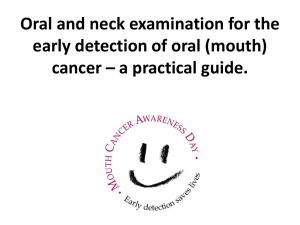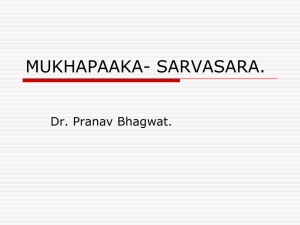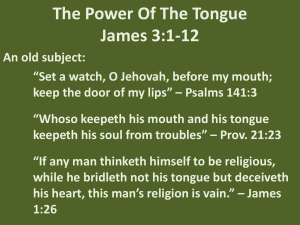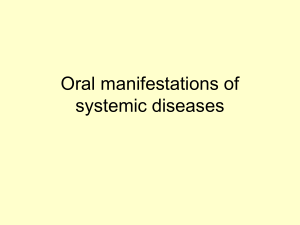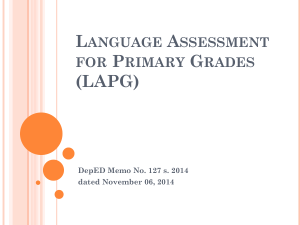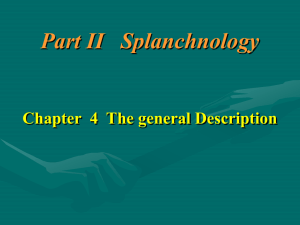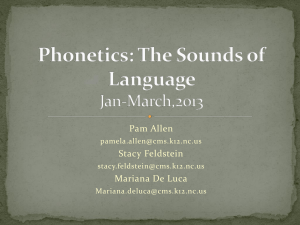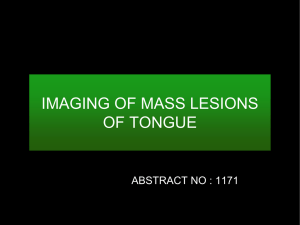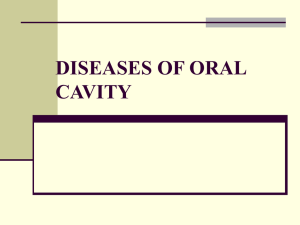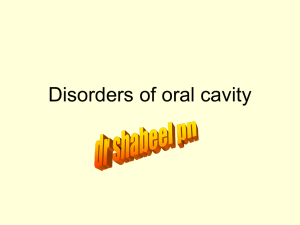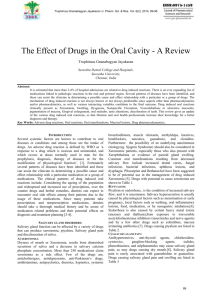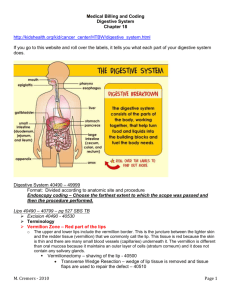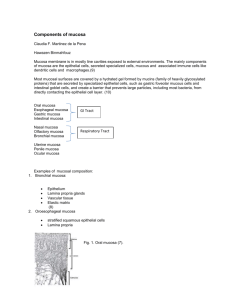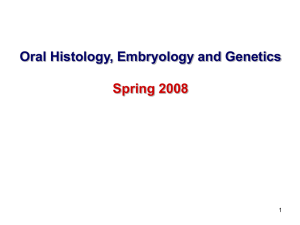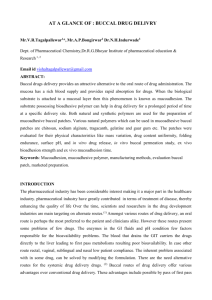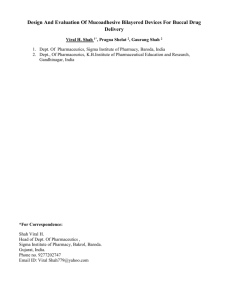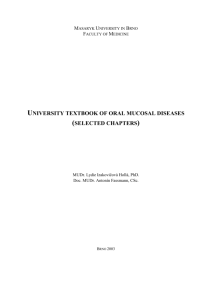Module 5: Oral Cancer Exam
advertisement
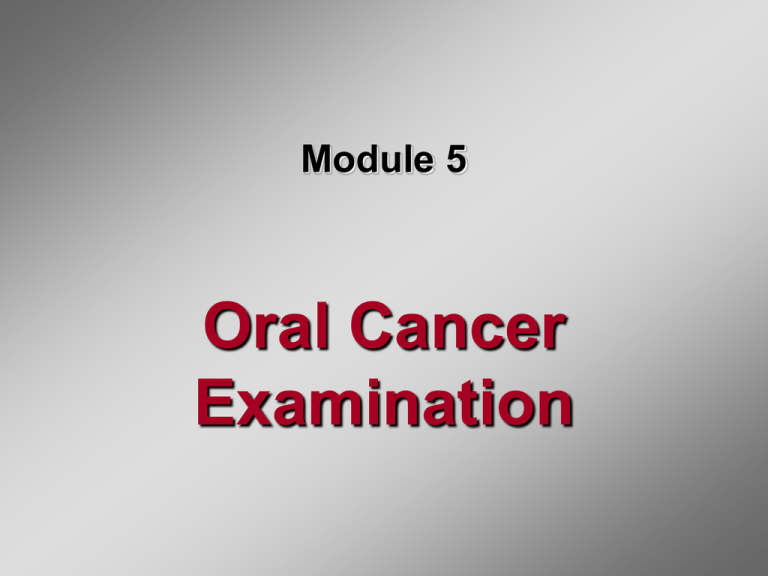
Module 5 Oral Cancer Examination Oral Cancer Exam To properly perform an oral cancer examination, you will need: – a good light source – mouth mirror – gloves – gauze – tongue depressor Extraoral exam: Visually assess the head face eyes ears neck Second Step: Palpate Lymph Nodes Look for changes in: Size Mobility Consistency Lymph nodes to palpate include the: Preauricular Postauricular Submandibular Anterior & posterior cervical Occipital Supraclavicular Parotid salivary gland Preauricular & Parotid Gland Postauricular Submandibular & Submental Anterior Cervical Posterior Cervical Occipital Supraclavicular Intraoral Exam Visually and digitally assess the: Lips Labial mucosa Buccal mucosa Gingiva Tongue Floor of the mouth Palate Changes to observe include: absence of symmetry enlargements swellings dry or crusty areas lesions color changes Lips Assess: Color Texture Presence of lesions on the upper and lower vermilion borders Lips Bidigitally palpate the lower lip from one commissure to the other for any changes in texture or swellings. Use the same technique for the upper lip. Labial Mucosa Assess by pulling the upper and lower lip away from the teeth to observe the labial mucosa and frena for changes in: color texture swelling Maxillary Labial Mucosa Mandibular Labial Mucosa Buccal mucosa Retract with a finger, mirror or tongue depressor. Look for changes in: color texture mobility swelling lesions Buccal Mucosa - Bidigital Palpation Repeat procedure on the other side of the mouth. Begin with facial gingiva and alveolar ridges in the maxillary right posterior gingiva. Follow the arch around to the left side. Drop to the lower left and follow around to the lower right Gingiva Tongue Observe the dorsum of the tongue for: swelling ulceration coating changes in papillae pattern variations in -size -color -texture Tongue Grasp the tip of the tongue with a piece of gauze and gently pull out and to the side to allow complete observation Repeat on the other side. Examine the ventral surface Ask the patient to place the tip of the tongue on the palate to observe the ventral surface. Palpate the tongue to feel for any growths. Floor of the mouth With the tongue still raised: Inspect the floor of the mouth Floor of the mouth Look for changes in: color texture swellings ulcerations Floor of the mouth Bimanually palpate the sublingual area Place the index finger of one hand inside the mouth Place the fingertips of the other hand extraorally under the chin Palate With the patient’s head tilted back: observe the hard and soft palate Oropharynx Visually assess the oropharynx Anatomical Landmarks The next several slides will show normal anatomical features present in the oral cavity, as well as some common features that are innocuous or self-limiting. Gingiva Vestibule Buccal Mucosa Oropharynx Dorsum of the tongue Floor of the mouth Palate Features that represent deviations from normal that are observed on the tongue include: Scalloped edges Fissured tongue Median rhomboid glossitis Geographic tongue (erythema migrans) Hairy tongue Fissured tongue Used with permission from John L. Giunta, BS, DMD, MS http://www.forsyth.org/oralpathology/case_014.htm Median rhomboid glossitis Used with permission from John L. Giunta, BS, DMD, MS http://www.forsyth.org/oralpathology/case_051.htm Geographic tongue Used with permission from John L. Giunta, BS, DMD, MS http://www.forsyth.org/oralpathology/case_013.htm Hairy tongue Used with permission from John L. Giunta, BS, DMD, MS http://www.forsyth.org/oralpathology/case_057.htm Mandibular Tori & Palatal Torus Used with permission from John L. Giunta, BS, DMD, MS http://www.forsyth.org/oralpathology/case_044.htm Lips Herpetic lesions Lips Angular cheilitis Lips Actinic cheilitis Buccal mucosa Linea alba Labial mucosa Aphthous ulcers Buccal mucosa Fordyce granules Summary Performing an oral cancer examination involves a visual and tactile assessment of head and neck. The extraoral examination includes the face, neck, head, eyes, and ears. Lymph nodes are palpated for masses and consistency. The intraoral examination includes inspecting and palpating the: Lips Labial mucosa Buccal mucosa Gingiva Tongue Floor of the mouth Palate If you find a lesion . . . • If oral cancer is strongly suspected, refer immediately for biopsy. • Reevaluate lesion in 14 days. If the lesion has not resolved after that length of time, measures should be taken, including a referral to a specialist for biopsy. • Use of the screening aids that are currently available may also be performed to assist in evaluating lesions. The most important takehome message is: Perform an oral cancer examination on all of your patients! It takes very little time and may save a life!

